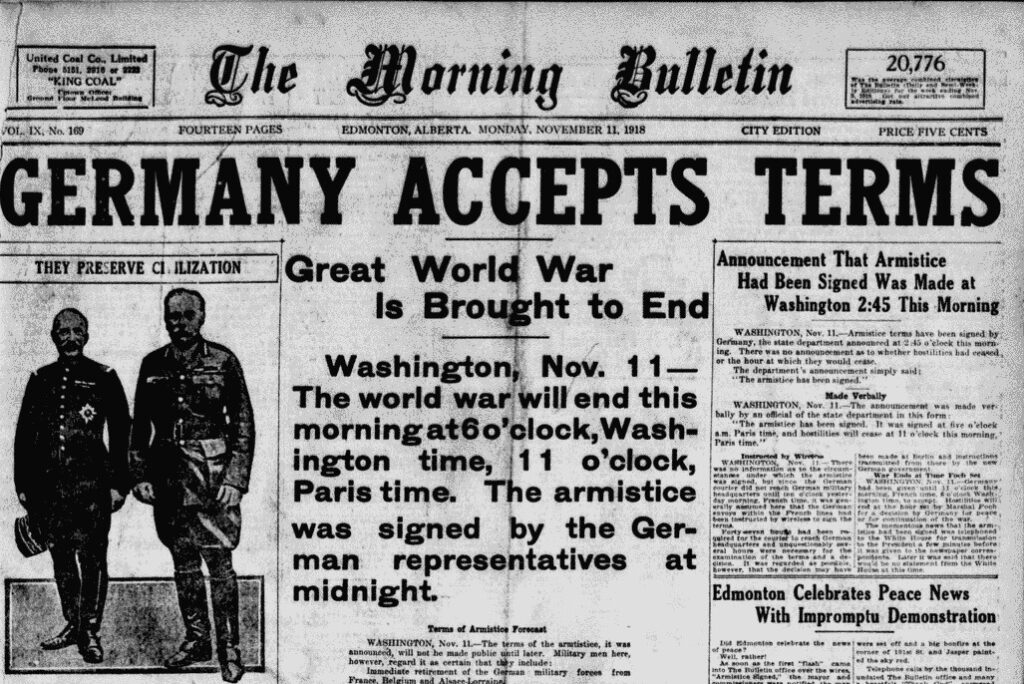When war was declared on August 4, 1914, men from the Edmonton region rushed to join up. Edmonton had two militia regiments – the 19th Alberta Dragoons and 101st Regiment, known as the Edmonton Fusiliers. These militias began to actively recruit, and became the basis of the 9th Battalion, Canadian Expeditionary Force.
As early as September 1914, a contingent of over 1,200 men left for Valcartier, Quebec, for training. At the same time, recruitment began for the 51st, 151st, 63rd, 66th, 138th, 194th, 202nd and 218th Battalions. The Edmonton Morning Bulletin noted that by November more than 12,000 men had enlisted in the region.
Many of the men had recently arrived from the United Kingdom and their loyalty was to King and Country. As a result of their experiences on the front, a deep love of Canada was forged that resulted in a surge of patriotism and a strong sense of national identity.
On the Home Front, women took over care of families, filled positions in the work force left empty by enlisted men, and raised funds for the war effort. For the first time, the number of young women exceeded young men in University of Alberta classes since 484 staff and students joined up.
Hospitals in the province shifted their focus to mending broken bodies and lengthy convalescences as the first battle casualties returned to Alberta. Existing mental asylums were inadequate to address the flood of men suffering from shell shock (Post Traumatic Stress Disorder).
Those left on the Home Front dealt with food rationing and helping those who had lost husbands, brothers, or sons on the Front. They also sent parcels with socks, handkerchiefs, cigarettes and other “soldier comforts.” Governments struggled to provide financial resources to support women left without breadwinners.
The Armistice of Compiègne, named for the place in France where a peace agreement was signed by the Allies and Germany, resulted in a ceasefire at 11 a.m. Paris time on November 11, 1918. In the next months, war-weary men returned home.
The joys of homecoming and family reunions were marred by the difficulties of dealing with the Spanish Flu pandemic that raged during 1918 and 1919. Hospitals and nursing homes could not cope with the sick and dying. The total death count was 3,259 Albertans, just under half the casualties on the Front.
Re-integrating soldiers into the work force also presented enormous challenges – there just were not enough jobs in a province and country gripped by an economic recession. The Winnipeg General Strike, which began on May 15, 1919, spread across the country and found enormous support in mines around Alberta including the many in Edmonton located on both banks of the North Saskatchewan River. Some returning soldiers, who had joined the Alberta Provincial Police, found themselves pitted against miners on the picket lines to defend company interests.
Homecoming was thus bittersweet.
After experiencing the horrors of war not only the military but also the civilian population were united in the belief that war must be avoided at all costs in the future.

By Adriana A. Davies, CA, Cav. D’Italia, PhD

